
9 minute read
A Platform For Improvement
A PLATFORM FOR IMPROVEMENTIMPROVE IMPROVEMENT ENT




Jeff Mirisola, Bricking Solutions, outlines how suspended platforms could help cement producers increase efficiency for vertical vessel maintenance.
It is time to upgrade maintenance practices for vertical vessels. Like any form of routine maintenance, inspecting, removing and replacing refractory in pre-calciners, cyclones, lime kilns, ISAMELT furnaces and other vertical vessels places a costly burden on facilities in terms of downtime and lost productivity. One of the main reasons for this is that the traditional solution for accessing vertical surfaces – scaffolding – severely limits effi ciency. It also increases safety risks for employees.
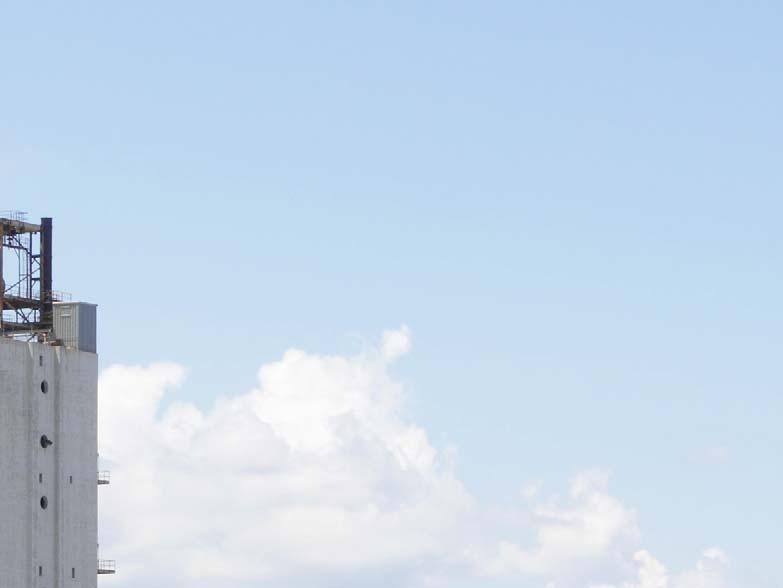
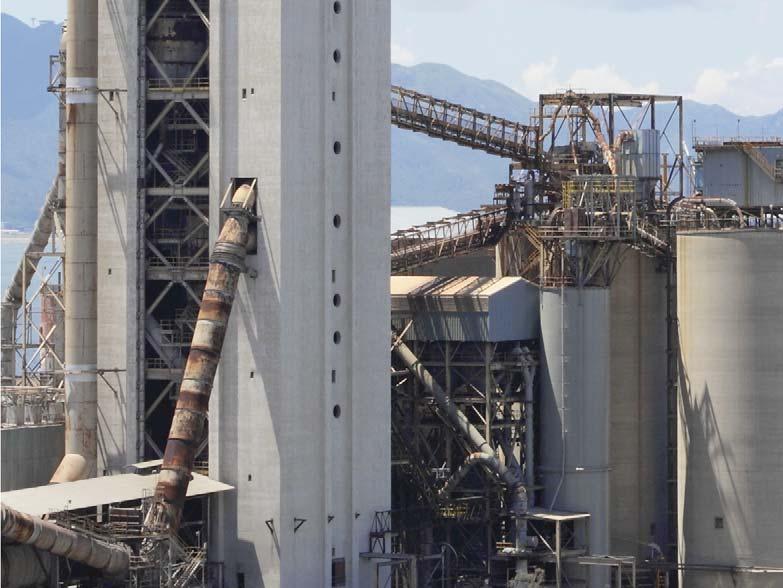

Cement and processing facilities are taking action to reclaim maintenance productivity and safety by investing in custom-manufactured suspended platforms for vertical vessel operations. These systems feature a lightweight, heavy-duty metal platform that is erected inside the vessel and raised or lowered using manual or electric hoists for hassle-free maintenance and relining applications.
Suspended platforms offer a number of benefi ts over scaffolding systems, starting with effectively eliminating the protracted set up times that dominate scaffolding-based maintenance schedules. This article will explain how these customised systems can boost productivity and safety throughout the maintenance process.
Setup
The amount of time scaffolding systems take to erect is their biggest deterrent and the greatest drain on maintenance productivity. This is due in part to the sheer complexity of the operation, which includes juggling a variety of pipes, hardware, boards and other materials to create the structure. Erection times vary based on vessel size and confi guration, but even with an experienced crew, scaffolding can take several shifts all the way up to an entire week to construct, putting signifi cant stress on maintenance budgets and timelines.
To simplify the process and decrease set up times, suspended platforms offer a modular design and pin-together construction. This greatly reduces the number of components and tools required for erection and allows crews to complete setup in as little as two hours.
Modular components manufactured from high-strength 6061-T6 aluminium provide the same strength as steel at a third of the weight. Also, because vertical vessels often feature small access points, manufacturers limit the size of modular components. The resulting pieces are easy to manoeuvre, weighing 18 kg (40 lbs) or less, and fi t through a 560 mm (22 in.) diameter access hole. This provides a lighter, more easily maneuverable solution than scaffolding’s heavy wooden planks and steel pipes, some of which are up to 4.3 m (14 ft) long.
Additionally, pin connections allow for fast assembly and improve platform strength over welded connections by allowing for some fl exibility while the platform is being raised or lowered. Welded joints are rigid, which increases stress on risers at platform joints. Pin-together joints are a better solution to help maintain safety and stability when dealing with varying speeds from the climbing hoists.
It is worth noting that suspended platforms require some site preparations. This can increase set up times initially – sometimes up to a full shift for complicated systems. But in the long run, a suspended platform can save facilities signifi cant time and effort with each use, leading to signifi cant ROI potential – while scaffolding remains cumbersome every time.
A cement facility, for example, was able to eliminate fi ve days of double shifts when installing a drip tube in a cyclone with the suspended platform, saving an estimated US$15 000/hr in downtime. Initial commissioning for the platform took eight hours, but subsequent productivity meant the facility saw ROI after using the platform twice.
In another example, a copper plant replaced the scaffold system for its smelter with a suspended platform. This increased not only productivity, but safety as well. Overall, the plant was able to save 320 man-hours per shutdown with the new system.

Cement and processing facilities are reclaiming maintenance productivity and safety with custom-manufactured suspended platforms for vertical vessel operations.
Suspended platform systems feature a lightweight, heavy-duty metal platform that is erected inside the vessel and raised or lowered using manual or electric hoists for hassle-free maintenance and relining applications. Room to move
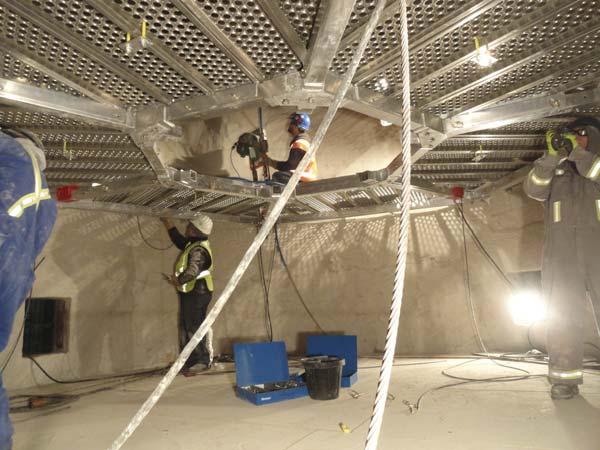
Even after the platform is assembled, the productivity benefi ts continue to add up. In terms of surface area, ease of use and access to the work area, suspended platforms rise above scaffolding.
With scaffolding, tools and materials need to be hoisted up to working height a little at a time, often manually. This is a slow process with a heavy
physical toll. It also limits productivity by restricting supply lines for materials, such as refractory brick, gunning equipment or other necessities.
A suspended platform, on the other hand, can easily transport up to 2722 kg (6000 lbs) up and down, and the open design provides ample space for personnel, tools and materials. This allows several workers to operate in the same area comfortably, as well as having everything they need close at hand for effi cient maintenance. Crews simply load all necessary materials at the start of the shift while the platform is positioned at the vessel’s access point. When more brick or other supplies are required, the crew lowers the platform, loads the necessary materials, then easily returns to height. This saves considerable time and energy and can increase productivity by limiting the number of trips up and down.
The platform also provides more room and easier positioning for equipment such as gunning machines for shotcrete applications. Crews simply set up the machine directly on the platform and maneuver the entire system up and down, eliminating downtime from repositioning while maintaining an ideal distance from the vessel surface for proper adhesion. Using a suspended platform for this application also eliminates the physical toll and risk to crews from heavy hoses hanging from the scaffolding.
Additionally, the open platform and electric hoist system allow for infi nitely variable height, resulting in access for inspection, removal and replacement of refractory materials.
Scaffolding is inherently rigid. It has to be to create a sturdy base of operations. However, this rigidity restricts crew access to the burn surface. Pipes inhibit visual inspection and make it diffi cult to work on the area directly behind them. The scaffolding structure can also obstruct small fl aws, causing them to be overlooked. Additionally, crews must squat down or reach up high when working on surfaces in between 8 ft scaffolding stories.
Suspended platforms provide crews with 360º access at a comfortable working height, regardless of the task at hand. To optimise accessibility and productivity for a particular facility, industry-leading manufacturers also customise designs to fi t vessels up to 6.7 m (22 ft) in diameter, so crews can get directly against the burn surface without risk of falling. This allows crews to inspect every inch, catching even the small fl aws that could lead to bigger problems down the line if overlooked, for more thorough inspection and more productive maintenance. Additionally, some suspended platforms allow crews to adjust the size of the platform by up to 1 m while suspended by changing the outer panels. This results in better accessibility and easy transition between different widths of a vessel such as a cyclone.

Ergonomics for better economics
Having a platform, rather than a narrow scaffold, increases worker safety.
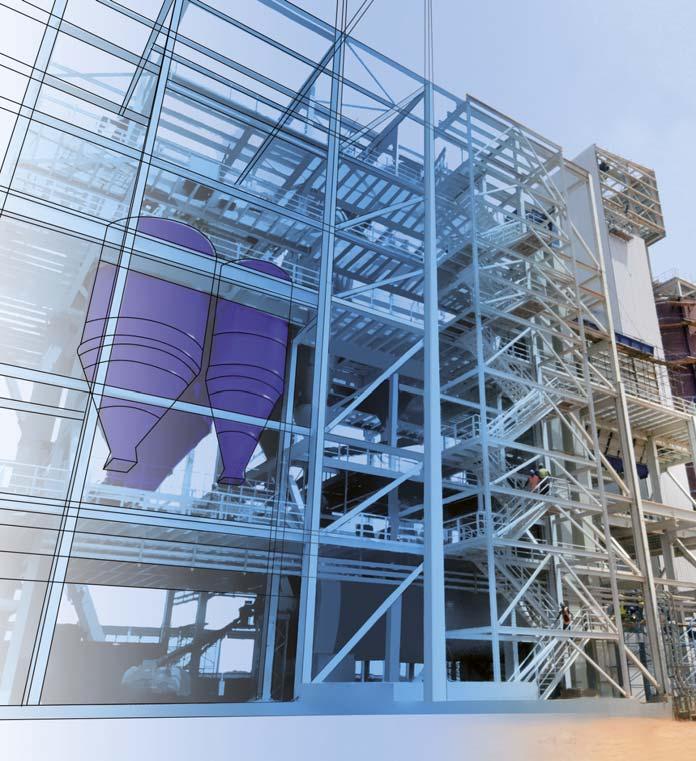
Your project, our solution
We deliver customised solutions for operators and investors of cement plants throughout the world. Intercem is the competent and experienced partner for planning, detail engineering, project handling of greenfield projects and the conversion/modernisation of production systems. Our 3-level system makes it possible for us to offer both used and modernised products, to compile new solutions made from used and new components or to create completely new systems.
And all that: Fast Fair Flexible
Intercem Engineering GmbH Intercem Installation GmbH
Carl-Zeiss-Straße 10 | 59302 Oelde Germany | Tel.: +49 2522 92058-0 E-Mail: info@intercem.de | www.intercem.de

With a suspended platform, crews enjoy 360º access at a comfortable working height, regardless of the task at hand.
Suspended platforms offer design and pin-together construction that allows crews to complete setup in as little as two hours.
A cement facility eliminated fi ve days of double shifts installing a drip tube in a cyclone with the suspended platform, saving an estimated US$15 000/hr in downtime.
Falls continue to rank number one in workplace injury reports, and refractory repair is not immune to tragic accidents. Recent US Bureau of Labour Statistics data identifi ed 338 fatal falls to the lower level among 1038 total construction fatalities for the year. That same year, falls on the same level or to lower levels amounted to US$17.1 billion – 29.2% – of the nearly US$60 billion spent by employers on serious, non-fatal workplace injuries.
A suspended platform replaces narrow wooden catwalks with an aluminium surface that spans the entire vessel, eliminating the risk of falls or dropped objects. It also eliminates the need for workers to climb up and down carrying small tools and the need to haul materials and larger equipment up to height, hand over hand, resulting in a much safer jobsite.
There are long-term safety benefi ts that go beyond this, as well. From setup through all aspects of refractory maintenance, a suspended platform puts less physical strain on employees. The lightweight, modular components are less cumbersome than long poles and heavy wooden planks. Easy access to materials and tools reduces the risk of repetitive motion injuries as well as minor cuts, bruises or scrapes that come with manually moving refractory materials. Being able to position the platform at the ideal working height for the job at hand limits bending or reaching, providing an ergonomic solution instead. All of these small but signifi cant safety benefi ts lead to long-term savings in the form of compensation claims and insurance premiums from workers.
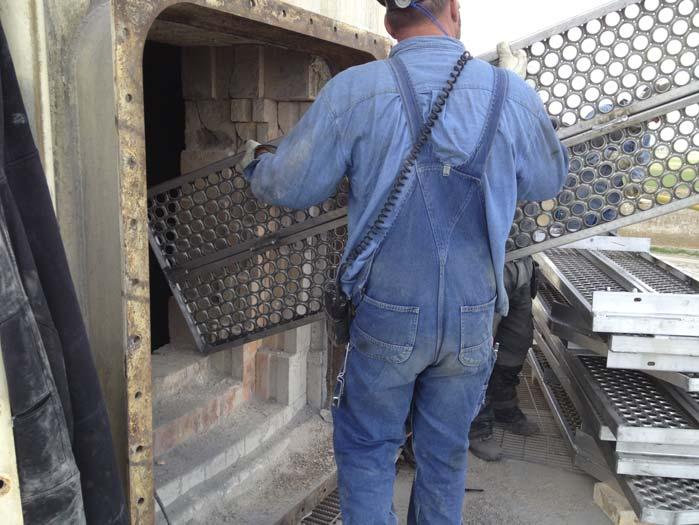
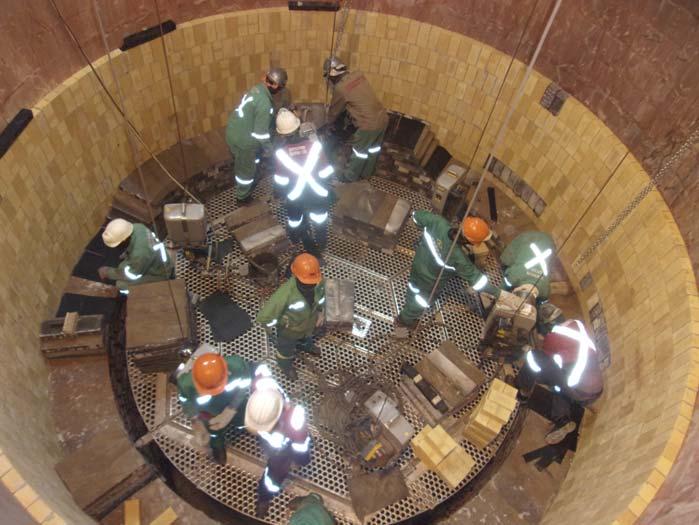
View from the top
Making the switch to a suspended platform requires some initial planning, but positive returns are almost immediate. Facilities that have made the switch save tens of thousands of dollars with each maintenance cycle, providing a return on investment in one or two uses.
The key is working with a reputable manufacturer that can provide a customised platform that fi ts a facility’s needs and vessels perfectly. Working together, these partners can revolutionise refractory maintenance in vertical vessels.
About the author
Jeff Mirisola is the Technical Sales Manager for Bricking Solutions, a leader in kiln refractory installation solutions. Jeff is a Mechanical Designer and certifi ed SolidWorks expert with more than 20 years of manufacturing experience and seven years of industry experience.






